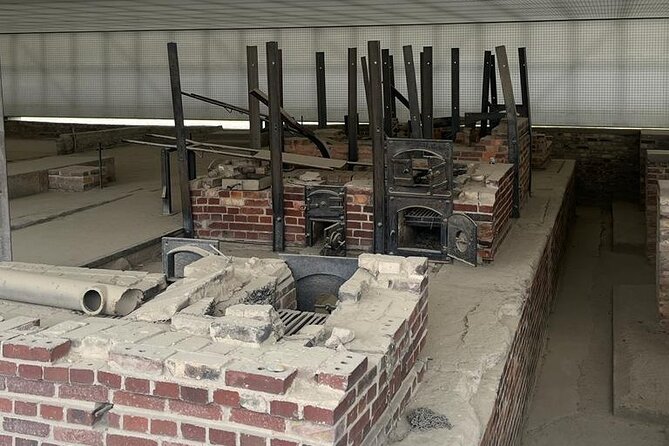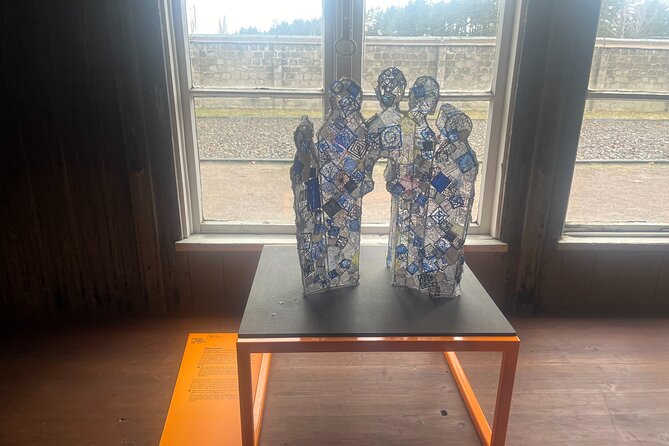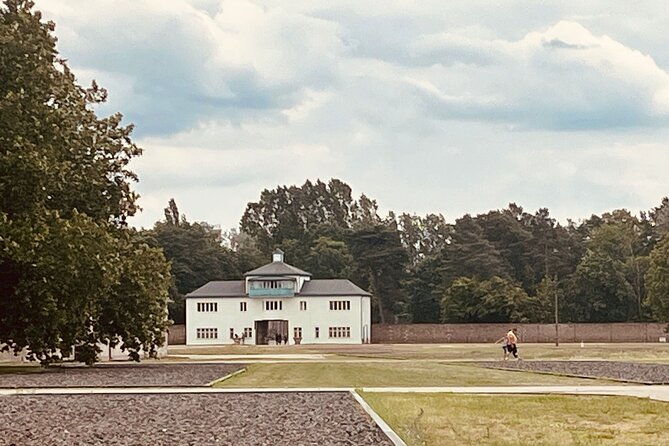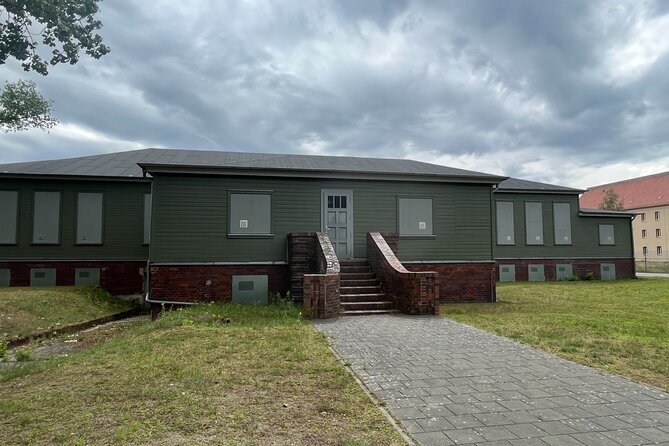The Sachsenhausen Concentration Camp stands as a powerful reminder of the atrocities committed during the Nazi regime. Established in 1936, this camp became a symbol of political repression, forced labor, and inhumane treatment, resulting in the suffering and deaths of tens of thousands. Today, as a memorial and museum, it emphasizes the importance of remembrance, reflection, and education to prevent the recurrence of such horrors. By confronting this dark chapter of history, visitors are compelled to consider the profound impact these events had on individuals, communities, and the human condition.
About Your Stay
-
Sachsenhausen Concentration Camp was a notorious Nazi facility established in 1936 that played a significant role in the atrocities of the regime.
-
The camp’s legacy serves as a haunting reminder of the dangers of authoritarianism and the need for vigilance against human rights violations.
-
Guided tours of the memorial site provide an opportunity to educate visitors about the camp’s history and honor the memory of the victims.
-
Visiting Sachsenhausen encourages reflection on the importance of preventing such tragedies from occurring again in the future.
-
Accessibility limitations and the emotional demands of the tour experience require consideration for those with physical or medical limitations.
Overview of Sachsenhausen Camp

Sachsenhausen Concentration Camp was established by the Nazi regime in 1936, initially to incarcerate political prisoners and other "undesirables."
Located just north of Berlin, the camp served as a brutal center for forced labor, torture, and execution, with tens of thousands of prisoners perishing within its walls over the years of its operation.
The camp played a significant role in the Nazi regime’s efforts to consolidate power and eliminate perceived enemies.
Sachsenhausen’s history highlights the atrocities committed by the Nazi government and serves as a sobering reminder of the importance of vigilance against such oppressive ideologies.
You can also read our reviews of more tours and experiences in Berlin.
Historical Significance and Legacy

Established by the Nazi regime in 1936, the concentration camp of Sachsenhausen played a pivotal role in the regime’s efforts to consolidate power and eliminate perceived enemies. Originally designed as a model camp, Sachsenhausen served as a training ground for SS guards and a site of horrific atrocities, including the systematic murder of tens of thousands of prisoners.
| Key Facts | |
|---|---|
| Opened | 1936 |
| Victims | Over 200,000 |
| Liberated | 1945 by Soviet forces |
| Current Status | Memorial site and museum |
The legacy of Sachsenhausen continues to serve as a powerful reminder of the human capacity for cruelty and the importance of vigilance against the rise of authoritarianism and intolerance.
Tour Logistics and Details

The guided tour of the Sachsenhausen Concentration Camp Memorial commences at Potsdamer Platz 10, where visitors gather in front of the Espresso House.
The tour guide can be identified by a mini yellow flag. The experience lasts approximately 4 hours and returns to the meeting point. Public transport tickets (ABC zone) are required.
The tour includes a donation for the memorial, snacks, and bottled water. Accessibility is limited, as the site isn’t wheelchair-friendly.
Pregnant travelers and those with serious medical conditions are advised against participation. A moderate fitness level is necessary. The group size is capped at 15 travelers.
Guided Experience and Highlights
Siobhán, the knowledgeable tour guide, leads visitors through Sachsenhausen Concentration Camp Memorial with a progressive, feminist lens, sensitively exploring the site’s historical context as a Nazi concentration camp, later a Soviet camp, and a propaganda tool.
The tour focuses on educating participants about the brutality and loss of life at Sachsenhausen, while also incorporating levity and aiming to avoid overwhelming them.
Participant feedback suggests Siobhán’s adaptability to travel issues and engaging group dynamics result in positive experiences.
The tour’s respectful approach and ability to balance gravitas with subtlety contribute to its effectiveness in conveying the site’s complex history.
Remembrance and Reflection
Visitors to Sachsenhausen Concentration Camp Memorial often find the experience deeply moving, as they confront the site’s sobering legacy and the immense human suffering it represents.
The memorial serves as a powerful reminder of the horrors of the Nazi regime and the need to prevent such atrocities from ever occurring again.
Visitors are encouraged to reflect on the following:
- The lives lost and the profound impact on families and communities
- The importance of remembering and honoring the victims to ensure their stories aren’t forgotten
- The responsibility to stand up against hatred, intolerance, and oppression in all its forms
Ultimately, the Sachsenhausen memorial invites visitors to engage in a profound act of remembrance and to rededicate themselves to the pursuit of a more just and humane world.
- Discover Berlin Half-Day Walking Tour
- Sachsenhausen Concentration Camp Memorial Tour From Berlin
- Explore Berlins Top Attractions 3-hour English Walking Tour
- Third Reich Berlin: Hitler and WWII Walking Tour
- Sachsenhausen Concentration Camp Memorial Tour With Max 15 People
- Visit to the Sachsenhausen Concentration Camp
Accessibility and Limitations
Although the tour provides a deeply meaningful experience, there are some accessibility and physical limitations visitors should be aware of.
The tour isn’t wheelchair accessible, so those with mobility challenges may find it difficult. Plus, the tour isn’t recommended for pregnant travelers or those with serious medical conditions, as the content and walking involved could be physically and emotionally taxing.
A moderate fitness level is required, as the tour involves significant walking over uneven terrain. Group sizes are capped at 15 travelers to maintain an intimate, tailored experience.
Participant Feedback and Impressions

Participants have consistently praised the tour guide’s knowledgeable commentary, which provides valuable historical context about Sachsenhausen’s complex role as a Nazi concentration camp, a subsequent Soviet camp, and a propaganda tool.
The tour’s progressive, feminist approach sensitively explores the brutality and loss of life, while the guide’s ability to incorporate levity helps educate without overwhelming.
Participant feedback highlights:
- Adaptability to travel issues and engaging group dynamics
- Respectful tone that aims to educate without being overbearing
- Ability to present a complex history in an accessible manner
Questions About Staying Here
Is Photography Allowed on the Tour?
Photography is generally allowed on the tour, but visitors are advised to be respectful and avoid any disruptive behavior. The tour guide may provide specific guidance on appropriate photography during the experience.
Can I Bring My Own Snacks and Water?
Based on the tour overview, participants are provided with snacks and bottled water as part of the tour inclusions. It’s not mentioned whether guests can bring their own snacks and water, so it’s best to check with the tour operator.
Are Storage Lockers Available at the Meeting Point?
The tour information does not indicate whether storage lockers are available at the meeting point. Participants are responsible for managing their own belongings and should plan accordingly if they need to store items during the tour.
Can I Leave the Tour Group at Any Time?
Participants are generally expected to stay with the tour group for the duration of the experience. However, leaving the group early may be possible in certain circumstances, though the guide should be informed ahead of time.
Is There an Age Limit for Participating in the Tour?
There is no specified age limit for the tour. However, it’s recommended for participants to have a moderate fitness level, and it’s not suitable for pregnant travelers or those with serious medical conditions. The tour is open to adults of all ages.
Worth The Stay
The Sachsenhausen Concentration Camp memorial serves as a poignant reminder of the horrors of the past, underscoring the importance of vigilance and action to prevent such atrocities from recurring. By fostering remembrance, reflection, and education, the site inspires visitors to recommit to upholding human rights and dignity, ensuring that the tragic lessons of history are not forgotten but instead guide us towards a more just and compassionate future.
More Tour Reviews in Berlin
Not for you? Here's more things to do in Berlin we have recnetly reviewed
- 5 Best Craft Beer Tours And Tastings In Berlin
- 3 Best Shopping Tours In Berlin
- 7 Best Christmas Experiences In Berlin
- 16 Best Dining Experiences In Berlin
- 2 Best 2 Day Tours In Berlin
- 4 Best Lunch Experiences In Berlin
- 2 Best Full-Day Tours In Berlin
- 15 Best Photography Experiences In Berlin
- 12 Best Dinner Tours In Berlin
- 25 Best Cruises And Boat Tours In Berlin
- 25 Best Food Tours In Berlin
- Third Reich Quest Experience in Berlin
